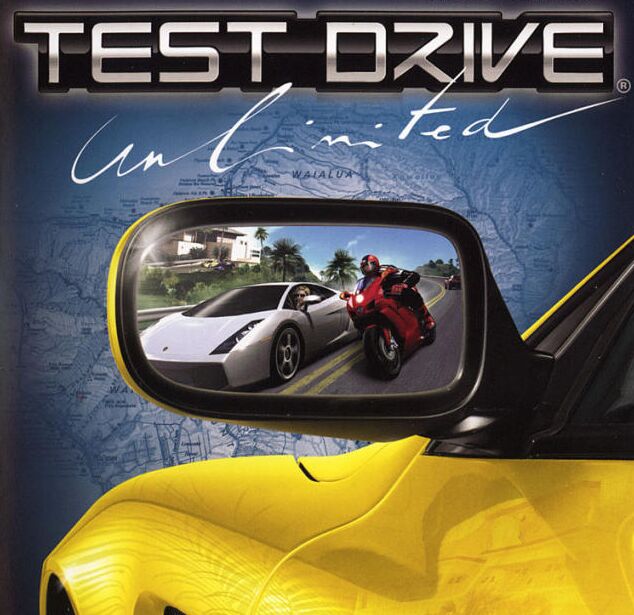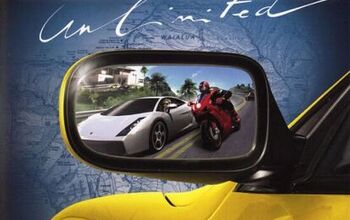How to Buy a Used Car Part Two: The Test Drive
[Editor’s note: Part One of Steve Lang’s updated guide to used car buying can be found here]
Schedule the test drive for a time when there’s no rush. If it’s bad weather, reschedule. Take a little notebook, write a quick check list based on this article, and make notes. When you approach the car’s owner, be friendly, polite and courteous. Do NOT try to “beat them down” to get a better deal. While you have every right to ask direct questions, you have no more right to insult their car than one of their children.
First, check the tires. Pull the steering wheel all the way to the left (and then right) so you can see the entire tread. Uneven tire wear– marks on the side or deep grooves in the middle– may indicate suspension issues. And nothing screams “lemon” louder than cheap, bald or strangely worn rubber.
Next, open and close all the doors several times, including the trunk and hood. Check for paint on the hinges and moldings. If a door creaks, it’s usually no big deal. If a door has trouble closing, it can signal anything from a broken hinge to frame damage.
On the driver’s side, make sure that the VIN sticker or VIN plate hasn’t been removed behind the driver’s side windshield.
Have a quick look at the panel gaps, especially the hood and trunk. Unless you’re looking at an old Land Rover, they should all be even. Check for water leakage in the trunk. Damp and/or a mildew smell often indicates problems underneath.
When you climb aboard, don’t be put off by worn seats or busted radios. Most interior surfaces and parts can be repaired and/or replaced easily and cheaply.
Lower the window and fire up the car– a few times. Do you hear any tapping or pinging sounds, or does it kick over with a smooth ‘vrooom’ and settle into an easy, quiet idle?
Test all the buttons and switches including the radio stations. Bring someone with you or ask the owner if he can help you out with the remainder buttons and turn stalks. Have them turn on the ‘left’ signal and look at the front and rear to make sure the bulbs work. Repeat with the right.
Then check the head lights along with the brights. Break lights should be checked in the rear as well as reverse. This may be your only time to verify their proper operation before owning the vehicle. So take the time to do it.
Finally have the fellow spray their windshield and make sure the wipers are in good order. Thank them for helping them you and then test the emergency brake to ensure that it’s operating properly. If you’re driving a stickshift you will want to do this later in the test drive on a steep upward incline.
Flip on the A/C. It should kick out cool air within fifteen seconds of ignition. With an older vehicle the performance of the A/C system should be one of the more critical concerns. (HVAC repairs can run as high as $500 to $1500.) When you’re on the road, test the heat and the A/C again to make sure the temperature and fan speed are constant.
Finally before going on the road lower your windows and turn the steering wheel all the way to the left and right. The motion should be seamless and silent. If there’s a lot of resistance, or the force required is uneven, the steering system may need anything from power steering fluid (cheap) to a power steering pump assembly (moderate) to a new rack (first born).
Now put the car in gear. Aside from a few models (older Mercedes in particular), a late or rough shift from park indicates that the car’s transmission may soon give up the ghost. If you experience very rough or late shifting, you’re done.
Brake force should be quick and constant. Unless the brakes have been recently replaced (ask), you shouldn’t hear any squeaking sounds.
Drive the car through a variety of traffic conditions, inclines and speeds, for at least a half hour. When going uphill, take your foot off the accelerator for a moment. Coast downhill as well. If the car’s transmission hunts, clunks or has trouble catching, the vehicle probably has a transmission or linkage issue.
If you hear a lot of ‘clacking’ or other unusual engine noises on initial acceleration, the engine’s components may need attention. If there’s an oil gauge, keep an eye on it. It should show approximately 25 to 80 psi during acceleration, and 10 to 20 when idling. The coolant temperature should hit a fixed point within ten minutes and never move.
After about twenty minutes of driving, take the car to a gas station. Keep the engine on. Open the hood and the gas cover release to make sure they’re in proper working order. If you know where the transmission dipstick is (and it’s a damn good idea to find out), check the level. Does it have bubbles? If the fluid is brown or black, it could be a sign of future transmission issues.
Turn the vehicle off and check the oil. If it’s not between the marks (too low or too high) or milky brown, you’re done.
Finally, get a wet paper towel, wipe the dirt off the relevant reservoirs and check the coolant, power steering and brake fluids to make sure they’re at their proper levels. S-l-o-w-l-y open the reservoir tank and check the coolant’s color. If it’s a multi-colored muck or brownish black, note it down.
After leaving the gas station, see if you can find a nice open parking lot or area where you can do a few ‘figure 8’s’. Lower the windows and turn the steering wheel all the way to the left. Drive very slowly and see whether you have any ‘clicking noises’ near the wheels. If it does, you will likely need to have the CV axle replaced on that side. Now turn it all the way to the right side and repeat. The turns should be ‘click’ and noise free.
By this point, you should have a pretty good idea whether your next step is towards purchase or home sweet home. If you’re blowing it off, thank the owner politely and leave promptly, without engaging in any further discussion whatsoever. (“It’s not what I had in mind.”) If you’re ready to move forward, it’s time to schedule a professional inspection.
[Mr. Lang invites TTAC readers to share theirused car test drive advice below. He can be reached directly at steve.lang@thetruthaboutcars.com]
More by Steven Lang
Latest Car Reviews
Read moreLatest Product Reviews
Read moreRecent Comments
- Honda1 Unions were needed back in the early days, not needed know. There are plenty of rules and regulations and government agencies that keep companies in line. It's just a money grad and nothing more. Fain is a punk!
- 1995 SC If the necessary number of employees vote to unionize then yes, they should be unionized. That's how it works.
- Sobhuza Trooper That Dave Thomas fella sounds like the kind of twit who is oh-so-quick to tell us how easy and fun the bus is for any and all of your personal transportation needs. The time to get to and from the bus stop is never a concern. The time waiting for the bus is never a concern. The time waiting for a connection (if there is one) is never a concern. The weather is never a concern. Whatever you might be carrying or intend to purchase is never a concern. Nope, Boo Cars! Yeah Buses! Buses rule!Needless to say, these twits don't actual take the damn bus.
- MaintenanceCosts Nobody here seems to acknowledge that there are multiple use cases for cars.Some people spend all their time driving all over the country and need every mile and minute of time savings. ICE cars are better for them right now.Some people only drive locally and fly when they travel. For them, there's probably a range number that works, and they don't really need more. For the uses for which we use our EV, that would be around 150 miles. The other thing about a low range requirement is it can make 120V charging viable. If you don't drive more than an average of about 40 miles/day, you can probably get enough electrons through a wall outlet. We spent over two years charging our Bolt only through 120V, while our house was getting rebuilt, and never had an issue.Those are extremes. There are all sorts of use cases in between, which probably represent the majority of drivers. For some users, what's needed is more range. But I think for most users, what's needed is better charging. Retrofit apartment garages like Tim's with 240V outlets at every spot. Install more L3 chargers in supermarket parking lots and alongside gas stations. Make chargers that work like Tesla Superchargers as ubiquitous as gas stations, and EV charging will not be an issue for most users.
- MaintenanceCosts I don't have an opinion on whether any one plant unionizing is the right answer, but the employees sure need to have the right to organize. Unions or the credible threat of unionization are the only thing, history has proven, that can keep employers honest. Without it, we've seen over and over, the employers have complete power over the workers and feel free to exploit the workers however they see fit. (And don't tell me "oh, the workers can just leave" - in an oligopolistic industry, working conditions quickly converge, and there's not another employer right around the corner.)































Comments
Join the conversation
You always want to look at the transmission fluid, if it is brown and smells burnt the transmission is shot. Sometimes you can even see clutch material clinging to the dipstick.
If you're looking at a used VW/Audi, it might be worth it to buy a copy of VCDS or find someone that has it before going to look at a car. That way you can examine different engine parameters while it's running and check for any stored codes. I recently bought a used 2002 Golf TDI from a small dealership who bought the Golf from a local VW/Audi dealer. It had 200K miles on it, so the VW/Audi dealer didn't want it. The guy that ran the car dealership was pretty surprised when I asked if I could scan for codes and pulled my laptop out of the trunk and connected it up. There are codes that can exist without tripping the check engine light. So if the tools are available, it's in your best interest to use them and not get screwed on a used car deal.